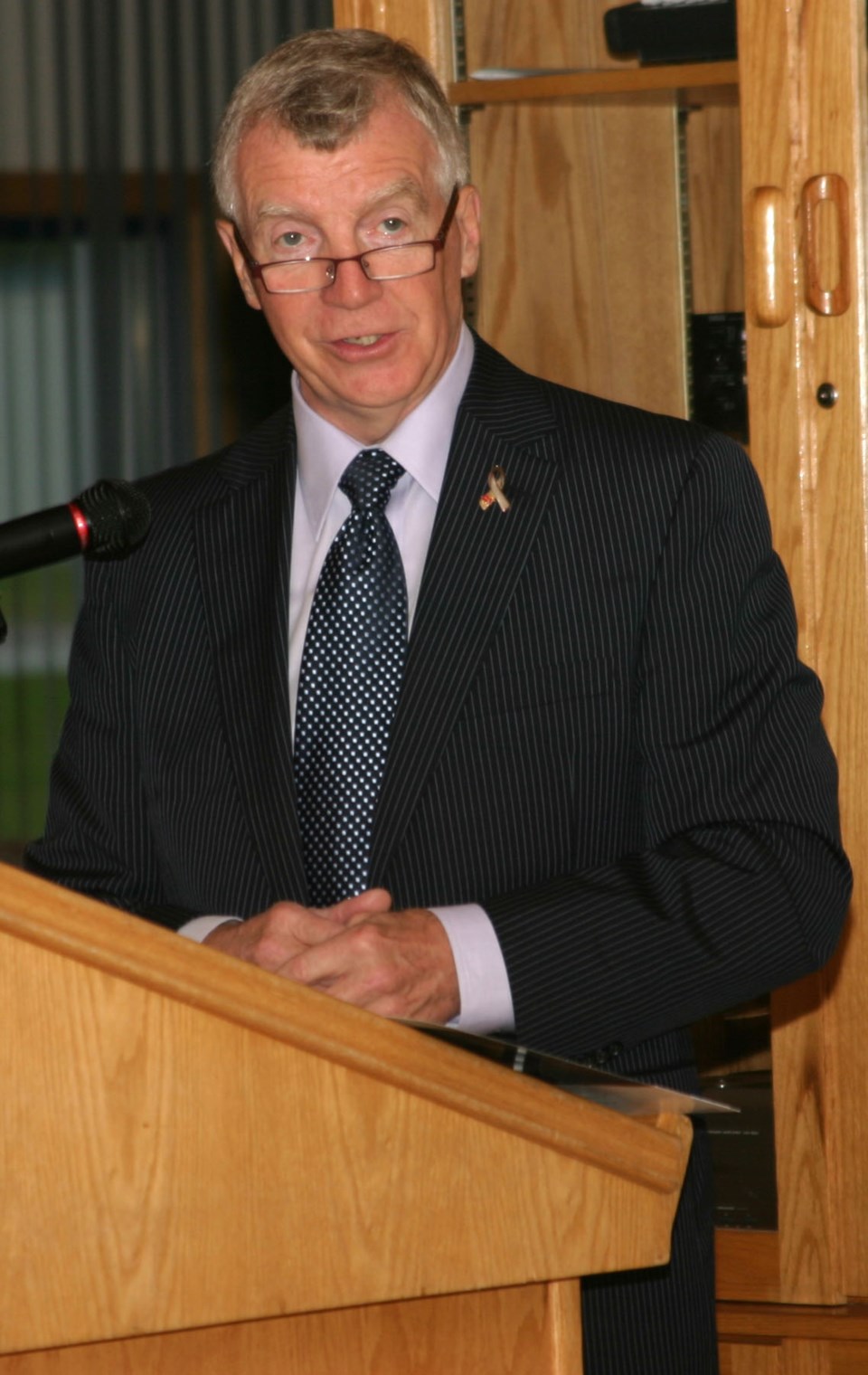A former 4 Wing commander stopped by 4 Wing on Thursday with some good news for CFB Cold Lake. Laurie Hawn, parliamentary secretary to the minister of national defence, told around 30 military members that the base will receive 24 F-35 Lightning II fighter jets in 2016.
The government ordered 65 F-35s to replace the fleet of CF-18 Hornets. Another 24 jets will be stationed at CFB Bagotville, while the remaining 17 will go to a training squadron. The F-35s are one of the largest defence procurements in Canadian history.
"By the time we actually get the joint strike fighter, the F-18 will be at the end of its life, so it's a very natural progression," said Base Commander Col. David Wheeler. "If we waited too much longer there could be a gap in fact, in between when Canada actually has a fighter aircraft, which would obviously affect our ability to defend our own airspace."
"When it came time for us to decide to buy a new airplane, we were already part of that program and it was the only fifth generation airplane out there that was available to us," explained Hawn. The government looked at a variety of aircraft, but only the F-35 offered the fifth generation capabilities. "We want airplanes for the next 40 years not the past 30 years."
He added that by sticking to the Memorandum of Understanding they save eight per cent of the cost. Additionally, the potential for industrial benefits by Canadian companies is "staggering," as every F-35 in the world will have Canadian parts in it.
The F-35 offers stealth ability and is hard to detect with radar due to advances in design and shape. The new fleet will allow forces to respond to task missions from NATO as well as defend Canada's sovereignty, said Hawn. Wheeler noted that the interoperability of the aircraft among Canada's allies would be a bonus of the F-35.
"If we can't defend our sovereignty and our claims to the Arctic, if you don't have a presence, you don't have a claim," said MP for Westlock-St. Paul Brian Storseth. "If we don't have a presence up there we're going to lose it."
The F-35 is a single-seat aircraft, differing from the two-seat F-18 - meaning more training will take place in a simulator. The grounded training will mean significant cost-savings for the base by reducing the "wear and tear" factor on the aircraft and the amount of jet fuel required for training.
The F-35 program costs $9 billion, with around 60 per cent for airframes with the rest for simulators and infrastructure. The government estimates another $7 billion for long-term support based on experience with the CF-18.
The Liberal Party started the F-35 program in 1997 with a competition between Boeing and Lockheed Martin to see who would build the jets, which Lockheed Martin won. Canada contributed to the cost of the development program in the U.S., making the F-35s a natural choice.
At the press conference Hawn outlined the government's commitment to the Canadian Forces. Plans call for new aircrafts, army equipment, and a long-term shipbuilding program for the Canadian Navy and Coast Guard.
"They've been left behind in the decade of darkness, and its catch-up time," Hawn said. "These are all the tools that enable the Canadian Forces to do the jobs that we the government and the broader Canadian people ask you to do."
He said Canada needed the F-35 "beauties" to fulfil its requirements for the 21st century and "to keep those steely-eyed fighter pilots in the air."
He noted Canada's purchase is part of the building of a global fleet of jets that will range from 3000 to 5000 aircrafts, the bulk of which are going to the U.S. Canada's participation in the F-35 program will create high-tech jobs and sustained economic benefits throughout the country.
"For fighter pilots, all roads lead to Cold Lake," Hawn told Canadian Forces members before outlining infrastructure improvements slated for 4 Wing. Accommodations for the aircrafts and maintenance facilities will be upgraded for the new planes at 4 Wing, something Hawn said would economically benefit local companies.
Hawn added that the government would like to replace many of the aging buildings on Canadian Forces Bases across the country. 4 Wing contributes around $180 million annually to the local economy.
"People getting to fly this new JSF (joint strike fighter) will love it and keep wanting to do it, I can guarantee that," said Maj. Brian Dunsterville. A flight instructor on his fourth posting to 4 Wing, Dunsterville said the announcement was "extremely motivational" and that the new jet would increase retention.



